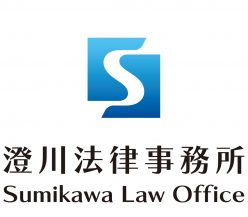When you sustain an injury, such as a fracture from a car accident, you typically undergo routine doctor visits or hospital stays for medical treatment. Over time and with the appropriate medical care, you will gradually recover.
However, every injury eventually reaches a point where no further improvement is expected. For instance, if you have a scratch from an accident, the point at which your wound has fully healed is when no further recovery can be anticipated.
As illustrated, many injuries reach a stage after certain treatments where no further recovery is possible. This point is referred to as the “Date of Fixation of Symptom” (Sho-Jyo-Kotei in Japanese). At this stage, the condition of the injury is considered stable and is not expected to improve or worsen.
The Date of Fixation of Symptom: Its Impacts on Your Car Accident Claim
In car accident injury claims, the “Date of Fixation of Symptom” (Sho-Jyo-Kotei) often plays a critical role. Let’s delve into how this date impacts your claim in detail.
Understanding the Impacts of the Date of Fixation of Symptom
Determining the Date of Fixation of Symptom is crucial because it directly affects the amount of compensation you can receive. Here are the key impacts:
Medical Fee Reimbursement:
After this date is established, medical fees will no longer be reimbursed. Since further treatment is deemed ineffective, insurance companies will discontinue coverage for medical expenses.
Compensation Adjustments:
The compensation amount for your injury claim may be adjusted based on whether the claim is made before or after this date. The timing of your claim in relation to the Date of Fixation of Symptom can significantly influence the coverage you receive.
The classification of what can be claimed before the date and what can be claimed after the date is as follows.
(1) Before the Date of Fixation of Symptom
– Medical expenses
– Compensation for loss of earnings
– Compensation for the medical treatments
(2) After the Date of Fixation of Symptom
– Compensation for after-effects
– Compensation for the lost future earnings
How is the Date of Fixation of Symptom Determined?
The Date of Fixation of Symptom is typically determined by your primary doctor, who assesses whether further treatment would be ineffective. Here are the key points to understand about this process:
Role of the Primary Doctor:
Your primary doctor will conduct the examination to evaluate the effectiveness of ongoing treatments and determine if you have reached a point where no further improvement is expected.
Importance of Symptom Declaration:
For injuries that are not visibly apparent, such as whiplash, accurately declaring your symptoms is crucial. The recovery period for such injuries should be determined after a thorough consultation with your doctor to ensure all symptoms are properly evaluated.
Insurance Company Influence:
Insurance companies may push for a Fixation of Symptom early in the recovery process, especially for conditions like whiplash. If you require further medical treatment, it is important not to accept the insurance company’s suggestion without careful consideration.
Consultation and Careful Consideration:
Always consult with your doctor in detail before agreeing to an Fixation of Symptom. Ensure that the examination is truly indicative of your recovery status and that no further treatment is necessary.
By understanding these factors, you can make more informed decisions about your medical care and your car accident claim.
See also:
Car Accident in Japan

